Permaculture companion plants for Basil
| Image | Name | Data | Description | Actions |
|---|---|---|---|---|
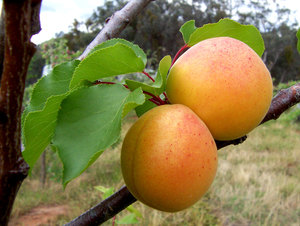
|
Apricot |
4-8
Perennial
Full sun, Partial sun/shade
Moist
Light (sandy), Medium
Deciduous
9.0
Trees
Adhesive, Dye, Gum, oil, Lumber, Espalier
true
Fruit, Seed
https://en.wikipedia.org/wiki/Prunus_armeniaca
Medium
Rosaceae
true
Oil, Gum
https://pfaf.org/User/Plant.aspx?LatinName=Prunus armeniaca
China North-Central, China South-Central, Inner Mongolia, Kazakhstan, Kirgizstan, Kriti, Manchuria, Qinghai, Uzbekistan, Xinjiang
Afghanistan, Albania, Algeria, Bulgaria, California, Central European Rus, Colorado, Corse, Cyprus, East European Russia, East Himalaya, France, Germany, Greece, Hungary, Idaho, Illinois, Iowa, Iran, Italy, Kansas, Korea, Krym, Lebanon-Syria, Libya, Michigan, Missouri, Montana, Morocco, New Mexico, New South Wales, North Caucasus, Oregon, Pakistan, Pennsylvania, Portugal, Queensland, Romania, Sardegna, South Australia, South European Russi, Tadzhikistan, Transcaucasus, Tunisia, Turkey, Turkey-in-Europe, Turkmenistan, Ukraine, Utah, Virginia, Washington, West Himalaya, Yugoslavia
https://powo.science.kew.org/taxon/urn:lsid:ipni.org:names:729463-1
|
The apricot is a tree native to China and Central Asia. It typically grows to be about 20-30 feet tall and has a spreading, round canopy. The leaves are oval-shaped and about 2-4 inches long, with a serrated edge and a glossy green surface. The flowers are white or pink and have five petals. The fruit is a drupe, similar in appearance to a peach, with a smooth, orange skin and a fleshy interior. Apricots are known for their sweet flavor and are often used in jams, jellies, and other preserves. The fruit can also be eaten fresh or dried. The seed, or pit, of the apricot contains a small amount of cyanide and should not be eaten. Apricots prefer a warm, sunny climate and well-draining soil. They are sensitive to frost and can be damaged by cold temperatures. To successfully grow apricots, they should be planted in an area with full sun exposure and watered regularly. Apricots have a number of uses beyond their delicious fruit. The wood of the tree is often used for smoking meats, and the leaves can be used as a natural insecticide. In traditional medicine, apricot oil has been used to treat a variety of ailments. |
Show
Edit |

|
Asparagus |
2-9
Full sun, Partial sun/shade
Moist
Light (sandy), Medium, Heavy (clay)
6.5-7.0
Evergreen
1-1.5m
1
Perennial
Herbs
Slow
12-18 inches rows, 6–8inches in row
Seed - direct sow, Seed - transplant, Division
16 weeks before last frost date
10-12 weeks, 1 week after last frost date
2-8 weeks
21-29°c (70-85°f)
true
Shoots, Stem
Sparrow grass
Spargel
Asparagaceae
Europe, Western asia, Afghanistan, Albania, Altay, Austria, Belarus, Bulgaria, Central European Rus, Corse, Czechoslovakia, France, Germany, Greece, Hungary, Iran, Kazakhstan, Krasnoyarsk, Krym, Lebanon-Syria, Mongolia, North Caucasus, Pakistan, Poland, Sicilia, South European Russi, Switzerland, Transcaucasus, Turkey, Turkey-in-Europe, Ukraine, West Siberia, Xinjiang
Alabama, Alberta, Algeria, Argentina Northeast, Argentina Northwest, Argentina South, Arizona, Arkansas, Baltic States, Bangladesh, Belgium, Bolivia, British Columbia, California, Colorado, Connecticut, Costa Rica, Cyprus, Delaware, Denmark, District of Columbia, East European Russia, East Himalaya, Ethiopia, Finland, Florida, Georgia, Great Britain, Idaho, Illinois, Indiana, Iowa, Ireland, Kansas, Kentucky, Labrador, Louisiana, Madagascar, Maine, Manitoba, Marianas, Maryland, Massachusetts, Mauritius, Mexico Central, Mexico Gulf, Mexico Northeast, Mexico Southeast, Mexico Southwest, Michigan, Minnesota, Mississippi, Missouri, Montana, Morocco, Nebraska, Netherlands, Nevada, New Brunswick, New Hampshire, New Jersey, New Mexico, New South Wales, New York, New Zealand North, New Zealand South, Newfoundland, North Carolina, North Dakota, North European Russi, Northwest European R, Norway, Nova Scotia, Ohio, Oklahoma, Ontario, Oregon, Pennsylvania, Portugal, Prince Edward I., Queensland, Québec, Rhode I., Réunion, Sardegna, Saskatchewan, Seychelles, Solomon Is., South Australia, South Carolina, South Dakota, Spain, Sweden, Tasmania, Tennessee, Texas, Trinidad-Tobago, Tunisia, Uruguay, Utah, Vermont, Victoria, Virginia, Washington, West Himalaya, West Virginia, Western Australia, Wisconsin, Wyoming
True
https://en.wikipedia.org/wiki/asparagus
https://pfaf.org/user/plant.aspx?latinname=asparagus officinalis
https://powo.science.kew.org/taxon/urn:lsid:ipni.org:names:531229-1
Fasciculated
3-8inches
8-12 weeks before last frost
Toxic fruits
Coffee
Pest control
|
Asparagus officinalis is a plant native to most of Europe, northern Africa, and western Asia. It is a herbaceous perennial plant that typically grows to around 0.5 to 1.5 meters in height, with slender stems and feathery leaves. The stems are typically green, but some varieties can have purple or white stems. The plant produces small, fragrant white or pink flowers in the spring, which give way to red berries in the fall, which are toxic to humans. Asparagus is a fast-growing plant that prefers well-draining, fertile soil and full sun exposure. It can grow in saline soils where other plants to do not grow. A soil pH below 6 is possible but best is to adjust to 6.5-7.0. It can be grown from seed or from crowns, and typically takes 2-3 years to reach maturity and begin producing edible shoots, which can be harvested for around 8-12 weeks each season. In cold climates, asparagus is winter hardy and can be left in the ground to overwinter. In warmer climates, it may need to be dug up and stored in a cool, dry place during the winter months. The edible shoots of asparagus can be harvested in the spring and early summer. They can be eaten raw or cooked, and have a delicate, slightly sweet flavor. The shoots can be stored in the refrigerator for a few days, but are best used fresh. Asparagus is a low-calorie, nutrient-dense vegetable, with high levels of vitamins A, C, and K, as well as folate and fiber. In addition to its use as a food, asparagus has a number of other uses. It is often used medicinally to treat a variety of conditions, including digestive disorders and urinary tract infections. The plant's leaves and stems can be used as mulch or compost, and the roots can help to fix nitrogen in the soil, making it useful for improving soil health. Asparagus has also been used as a weaving material and as a building material, due to its strength and durability. Asparagus is a valuable plant for wildlife, providing food and habitat for a variety of animals. The plant's flowers attract bees and other pollinators, and the berries are eaten by birds and small mammals. Asparagus is a good companion plant to the Tomato since it repels some harmful root nematodes for Tomatoes and Tomatoes repel the asparagus beetle. |
Show
Edit |

|
Fennel |
4-9
Full sun
Dry, Moist
Light (sandy), Medium, Heavy (clay)
1.5
1
Perennial
Herbs
true
Flowers, Leaves, Root, Seed, Stem
Sweet fennel
Fenchel
Apiaceae or umbelliferae
Afghanistan, Albania, Algeria, Baleares, Bulgaria, Corse, Cyprus, East Aegean Is., Egypt, Eritrea, Ethiopia, France, Greece, Gulf States, Iran, Iraq, Italy, Kriti, Lebanon-Syria, Libya, Morocco, Nepal, North Caucasus, Pakistan, Palestine, Portugal, Sardegna, Saudi Arabia, Sicilia, Sinai, Spain, Tadzhikistan, Transcaucasus, Tunisia, Turkey, Turkey-in-Europe, Turkmenistan, Uzbekistan, West Himalaya, Yemen, Yugoslavia
Alberta, Amsterdam-St.Paul Is, Angola, Argentina Northeast, Argentina Northwest, Argentina South, Arizona, Assam, Austria, Bahamas, Bangladesh, Belgium, Bermuda, Brazil South, Brazil Southeast, British Columbia, California, Cameroon, Cape Provinces, Central European Rus, Chile Central, Chile North, Chile South, China North-Central, China South-Central, China Southeast, Colombia, Connecticut, Costa Rica, Cuba, Czechoslovakia, Delaware, Denmark, Djibouti, Dominican Republic, East Himalaya, Ecuador, El Salvador, Fiji, Finland, Florida, Georgia, Germany, Great Britain, Guatemala, Gulf of Guinea Is., Hainan, Haiti, Hawaii, Hungary, Illinois, India, Iowa, Ireland, Jamaica, Jawa, Juan Fernández Is., Kansas, Kazakhstan, Kentucky, Kenya, Korea, Krym, KwaZulu-Natal, Leeward Is., Lesotho, Louisiana, Maine, Marianas, Maryland, Massachusetts, Mauritius, Mexico Northwest, Michigan, Mississippi, Missouri, Mongolia, Mozambique, Myanmar, Nebraska, Netherlands, Nevada, New Jersey, New Mexico, New South Wales, New York, New Zealand North, New Zealand South, Niue, Norfolk Is., North Carolina, Northern Provinces, Norway, Ohio, Ontario, Oregon, Paraguay, Pennsylvania, Peru, Poland, Puerto Rico, Queensland, Québec, Rhode I., Rodrigues, Romania, Réunion, Society Is., Somalia, South Australia, South Carolina, South European Russi, St.Helena, Sudan, Sweden, Switzerland, Taiwan, Tanzania, Tasmania, Tennessee, Texas, Thailand, Ukraine, Uruguay, Utah, Victoria, Vietnam, Virginia, Washington, West Virginia, Western Australia, Windward Is., Wisconsin, Zimbabwe
https://en.wikipedia.org/wiki/Fennel
https://pfaf.org/User/Plant.aspx?LatinName=Foeniculum vulgare
https://powo.science.kew.org/taxon/urn:lsid:ipni.org:names:842680-1
3
Weed potential
Oil, Condiment, Drink, Tea
Dye, Essential Oil, oil, Strewing, Dynamic accumulator, Fragrance
|
Fennel (Foeniculum vulgare) is a flowering plant that is native to the Mediterranean region. It is a tall, upright plant with feathery, light green leaves and yellow flowers. The stem of the plant is hollow and can grow up to 5 feet in height. The plant is commonly grown for its edible leaves, seeds, and bulbs, which have a sweet, anise-like flavor. The leaves can be used fresh or dried in salads, sauces, and soups. The seeds can be used whole or ground as a spice in baking and cooking. The bulbs can be sliced and eaten raw or cooked. Fennel prefers well-draining soil and full sun exposure. It is a hardy plant that can tolerate cold temperatures and is often grown as a perennial in temperate climates. In colder climates, it should be grown as an annual or dug up and brought indoors for the winter. Fennel is a versatile plant that can be used in a variety of ways. In addition to its culinary uses, the plant has medicinal properties and can be used to treat digestive issues. The leaves can be used as a natural insect repellent, and the plant is known to attract pollinators and beneficial insects to the garden. |
Show
Edit |
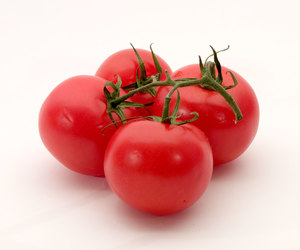
|
Tomato |
10-12
Annual, Perennial
Full sun
Moist
Light (sandy), Medium, Heavy (clay)
2.0
True
Fruit, Seed
https://en.wikipedia.org/wiki/Tomato
Fast
Garden tomato, Dumádu, Garden tomato, Love apple, Lycopersicum esculentum, Tomate, Tomato, Tomato extract containing lycopene, Tomato|thakkali, Tumatis, Lycopersicon esculentum
Solanaceae
Tomate
Oil
https://pfaf.org/User/Plant.aspx?LatinName=Solanum lycopersicum, https://pfaf.org/User/Plant.aspx?LatinName=Lycopersicon esculentum
Start seeds indoors 5-6 weeks before last frost
In containers or in rows in beds around last frost date
6.2-6.8
70-80°f
Peru
Alabama, Alaska, Andaman Is., Angola, Arizona, Arkansas, Assam, Austria, Azores, Bahamas, Bangladesh, Belarus, Benin, Bolivia, British Columbia, Bulgaria, Burkina, California, Cambodia, Cameroon, Canary Is., Cape Verde, Caroline Is., Central African Repu, Chagos Archipelago, Chatham Is., Christmas I., Colombia, Comoros, Connecticut, Cook Is., Costa Rica, Cuba, Cyprus, Czechoslovakia, Delaware, Dominican Republic, East Aegean Is., East European Russia, East Himalaya, Ecuador, Fiji, Florida, Galápagos, Georgia, Gilbert Is., Gulf of Guinea Is., Haiti, Hawaii, Illinois, India, Indiana, Iowa, Ivory Coast, Jawa, Kansas, Kazakhstan, Kentucky, Korea, Laccadive Is., Laos, Leeward Is., Line Is., Louisiana, Madagascar, Madeira, Maine, Malawi, Mali, Marianas, Marquesas, Marshall Is., Maryland, Massachusetts, Mauritania, Mauritius, Michigan, Mississippi, Missouri, Montana, Mozambique, Myanmar, Namibia, Nansei-shoto, Nauru, Nebraska, Nepal, Nevada, New Brunswick, New Caledonia, New Hampshire, New York, New Zealand North, Nicaragua, Nicobar Is., Niue, North Carolina, North Dakota, Nova Scotia, Ogasawara-shoto, Ohio, Ontario, Oregon, Pakistan, Panamá, Pennsylvania, Philippines, Pitcairn Is., Puerto Rico, Québec, Rhode I., Réunion, Saskatchewan, Selvagens, Society Is., South Carolina, South European Russi, Tadzhikistan, Taiwan, Tennessee, Texas, Trinidad-Tobago, Tuamotu, Tubuai Is., Turkey, Turkmenistan, Tuvalu, Utah, Uzbekistan, Venezuela, Vermont, Vietnam, Virginia, Wake I., Wisconsin, Zambia, Zaïre, Zimbabwe
1.00
https://powo.science.kew.org/taxon/urn:lsid:ipni.org:names:316947-2
|
The tomato is a flowering plant native to South America. It is a member of the nightshade family and closely related to the potato. The tomato plant typically grows to a height of 1-3 meters and has a weak, hairy stem. The leaves are arranged alternately on the stem and are typically dark green in color. The plant produces small yellow or white flowers, which develop into the fruit we know as tomatoes. The fruit itself is typically red, but can also be yellow, orange, green, or purple. Indeterminate tomato plants are perennials in their native habitat, but are cultivated as annuals. Determinate, or bush, plants are annuals that stop growing at a certain height and produce a crop all at once. Tomatoes prefer warm, sunny growing conditions and well-drained, humus-rich soil. They can be grown in a variety of soil types, but perform best in soil with a pH between 6 and 6.8. In order to cultivate tomatoes successfully, growers may need to provide support for the plant (such as a stake or cage) to prevent the fruit from weighing down the stem, and may also need to water and fertilize the plant regularly. Tomatoes are generally considered to be frost-sensitive, so in areas with cold winters they may need to be grown in a greenhouse or indoors. There are a great number of cultivars. The edible parts of the tomato plant are the fruit and the leaves. The fruit can be eaten raw or cooked, and is commonly used in a variety of dishes, such as salads, sandwiches, and pasta. The leaves, although not commonly eaten, are also edible and have a slightly bitter taste. After harvest, tomatoes can be stored at room temperature, in a cool place, or in the refrigerator. |
Show
Edit |

|
Capsicum Annuum Grossum |
true
Medium
Moist
Full sun
10-11
Cayenne pepper, chili pepper, christmas pepper, red pepper, ornamental chili pepper
Light (sandy), Medium, Heavy (clay)
Solanaceae
1.0
Paprika, gemüsepaprika
Flowers, Fruit, Leaves
Perennial
https://pfaf.org/User/Plant.aspx?LatinName=Capsicum annuum
Colouring, Condiment
Companion
|
Show
Edit |
|
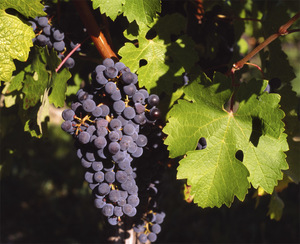
|
Common Grape Vine |
6-10
Perennial
Full sun, Partial sun/shade
Dry, Moist
Light (sandy), Medium, Heavy (clay)
Deciduous
15-32m
Vines
True
Flowers, Fruit, Leaves, Seed
Seed - direct sow, Cuttings
https://en.wikipedia.org/wiki/Vitis_vinifera
Fast
Wine grape, Purpleleaf grape, Common grape, Angur, Diva loza, Grozde yagorida, Tumpeang ba'y chu, Uva, Vid, Vigne, Vino, Weinrebe, Aanab, Ainab, Aitoviiniköynnös, Lehti, Angoor, Angur, Blad från vinranka, Bortermo szolo levél, Cognac oil, Common grape vine, Dakh, Darakh, Drakh, Draksa, Draksh, Draksha, Draksha kottai, Draksha pondu, Drakshai, Drakya, Dry grapes, Drak?a (fruit), European grape, Feuille de vigne rouge, Folha de videira, Frunze de vita-de-vie, Gostani, Gostoni, Grape, Grape seeds oligomeric proanthocyanidins, Grape vine, Grapevine, Grapevine leaf, Kashmish, Kishmish, Kottai drakshai, Lambrusca, Lambrusque, Lie de vin, List vinica, List vinske trte, Lisc winorosli wlasciwej, Maneka, Maweez munaqqa, Maweezak kohi, Munaca, Munaqqa, Munkka, Munthringya, M?dvika, Parra, Raisins, Rote weinrebenblätter, Rød vinranke, Blad, Tikruju vynmedžiu lapai, Vid, Hoja de, Vigne, Vigne rouge, Vigne vinifère, Viinapuu lehed, Vinblad, Vine, Vinho, Vino, Vite, Foglia, Vitis vinifera, Flos, Vitis viniferae folium, Vínviðarlauf, Weinrebe, Werqa tad-dielja, Wijnstokblad, Wine, Wine grape, Zabeeb-ul-jabal, Cervený list vinné révy, Ista vinkoka lapas
Vitaceae
Weintraube
Oil
https://pfaf.org/user/plant.aspx?latinname=Vitis+Vinifera
Southern Europe, Central Europe, Southwestern asia , Albania, Austria, Bulgaria, Corse, Cyprus, Czechoslovakia, France, Germany, Greece, Hungary, Iran, Iraq, Italy, Kirgizstan, Krym, Lebanon-Syria, North Caucasus, Palestine, Romania, Sardegna, Sicilia, Switzerland, Tadzhikistan, Transcaucasus, Turkey, Turkey-in-Europe, Turkmenistan, Ukraine, Uzbekistan, Yugoslavia
4.3-8.6
Tap
0.6-6m
8feet
6 weeks
20°c (69°f)
12 months
False
Druif
Vindrue
Afghanistan, Algeria, Angola, Argentina Northeast, Azores, Baleares, Bangladesh, Belgium, British Columbia, California, Canary Is., Cape Verde, Caroline Is., Chad, China North-Central, China South-Central, China Southeast, East Aegean Is., East European Russia, East Himalaya, Easter Is., Ecuador, Eritrea, Ethiopia, Gulf of Guinea Is., Idaho, India, Kazakhstan, Korea, Kriti, Laos, Libya, Madeira, Massachusetts, Morocco, New Hampshire, New York, New Zealand North, Oregon, Pakistan, Pennsylvania, Peru, Poland, Portugal, South European Russi, Spain, Tibet, Trinidad-Tobago, Tunisia, Vietnam, Washington, West Himalaya
https://powo.science.kew.org/taxon/urn:lsid:ipni.org:names:30478388-2
1
|
This is the common grape which has a lot of varieties but only a few are grown (commercially). Common Grape Vine (Vitis vinifera) is a species of grapevine native to the Mediterranean region, central Europe, and southwestern Asia. It is a woody perennial vine that grows to a length of 20-30 feet when supported by a trellis or other structure. The leaves are dark green and palmately lobed, with five to nine leaflets. The flowers are small and greenish-white, and are produced in clusters. The fruit is a berry, typically blue or purple in color, and is edible. In terms of growth and cultivation, Common Grape Vine prefers full sun and well-draining soil. It can be grown from cuttings or from grape seeds, and should be trained to a trellis or other support structure. In order to produce fruit, the plant must be cross-pollinated with another grapevine of a different variety. The fruit is typically harvested in the late summer or early fall. The edible fruit of the Common Grape Vine can be eaten fresh or used to make wine, juice, and other products. The fruit can be stored by freezing or canning. The leaves can also be eaten, and are commonly used in dishes such as dolma. In addition to its edible fruit, the Common Grape Vine has several other uses. The leaves can be used as a source of natural dye, and the wood can be used for fuel or to make furniture and other items. The plant also provides habitat and food for a variety of wildlife, including birds and small mammals. Fruits are used to be eaten fresh or used for producing juice, wine or vinegar. Raisins are made out of dried grapes. Leaves and flowers can be eaten too. Seeds are used to produce oil. # Propagation While propagation from seed is possible, propagating from cuttings or grafting is way more common and simple. |
Show
Edit |

|
Chives |
3-12
Full sun, Partial sun/shade
Moist
Light (sandy), Medium, Heavy (clay)
6.0-7.0
0.3
0.45
Perennial
Herbs
Medium
8-12inches
Seed - direct sow, Seed - transplant, Division
4-6 weeks before last frost
14-21 days
21°c (70°f)
antifungal, Dynamic accumulator, Ground cover, Fragrance
true
Flowers, Leaves, Root
Wild chives, Flowering onion
Schnittlauch
Alliaceae
Allium
Afghanistan, Alaska, Albania, Alberta, Altay, Austria, Baltic States, Belarus, British Columbia, Bulgaria, Buryatiya, Central European Rus, Chita, Colorado, Connecticut, Corse, Czechoslovakia, Denmark, East European Russia, Finland, France, Germany, Great Britain, Greece, Idaho, Iran, Iraq, Irkutsk, Italy, Japan, Kamchatka, Kazakhstan, Khabarovsk, Korea, Krasnoyarsk, Kuril Is., Labrador, Magadan, Maine, Manitoba, Massachusetts, Michigan, Minnesota, Mongolia, Montana, Netherlands, New Brunswick, New Hampshire, New Jersey, New York, North Caucasus, North European Russi, Northwest European R, Northwest Territorie, Norway, Nova Scotia, Nunavut, Ohio, Ontario, Oregon, Pakistan, Pennsylvania, Poland, Portugal, Primorye, Prince Edward I., Québec, Rhode I., Romania, Sakhalin, Saskatchewan, South European Russi, Spain, Sweden, Switzerland, Tadzhikistan, Transcaucasus, Turkey, Tuva, Ukraine, Vermont, Washington, West Himalaya, West Siberia, Wisconsin, Wyoming, Xinjiang, Yakutskiya, Yugoslavia, Yukon
Argentina South, Azores, Belgium, Comoros, Cuba, Dominican Republic, Falkland Is., Haiti, Illinois, Ireland, Jamaica, Maryland, Newfoundland, Seychelles, Trinidad-Tobago
https://en.wikipedia.org/wiki/Chives
https://pfaf.org/User/Plant.aspx?LatinName=Allium schoenoprasum
https://powo.science.kew.org/taxon/urn:lsid:ipni.org:names:528823-1
|
Chives (Allium schoenoprasum) are a bulb-forming herbaceous perennial plants that belong to the same family as onions, garlic, and leeks. They are native to Europe, Asia, and North America, and are commonly grown in gardens for their delicate onion flavor and attractive purple flowers. Chives are easy to grow and require little maintenance. They can be grown in pots or containers, or directly in the ground. The plants have thin, hollow leaves that grow in tight clumps and reach a height of around 12-20 inches (30-50 cm). The bulbs are slender, conical, 2–3 cm (3⁄4–1 1⁄4 in) long and 1 cm (1⁄2 in) broad, and grow in dense clusters from the roots. The scapes (or stems) are hollow and tubular, up to 50 cm (20 in) long and 2–3 mm (1⁄16–1⁄8 in) across, with a soft texture, although, prior to the emergence of a flower, they may appear stiffer than usual. The grass-like leaves, which are shorter than the scapes, are also hollow and tubular, or terete, (round in cross-section) which distinguishes it at a glance from garlic chives (Allium tuberosum). The flowers are pale purple, and star-shaped with six petals, 1–2 cm (1⁄2–3⁄4 in) wide, and produced in a dense inflorescence of 10-30 together; before opening, the inflorescence is surrounded by a papery bract. The seeds are produced in a small, three-valved capsule, maturing in summer. The herb flowers from April to May in the southern parts of its habitat zones and in June in the northern parts. Chives are often used as a seasoning in a variety of dishes, including soups, omelets, and dips. They can also be added to melted butter to make a simple but flavorful sauce for steamed vegetables. Chives are low in calories and a good source of vitamin C, making them a healthy addition to any diet. |
Show
Edit |
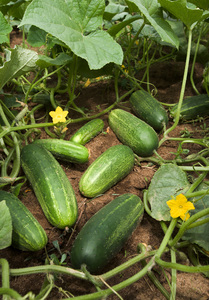
|
Cucumis sativus |
9-11
Annual
Full sun
Moist
Light (sandy), Medium, Heavy (clay)
2
Vines
Fruit, Leaves, Seed
Seed - direct sow, Seed - transplant
1 week after last frost
https://en.wikipedia.org/wiki/Cucumber
Cucurbitaceae
Gurke
50-65
23cm
6.0-6.8
15-30°C (60-85°F)
https://pfaf.org/User/Plant.aspx?LatinName=Cucumis sativus
True
Fruit
Assam, Bangladesh, China South-Central, China Southeast, East Himalaya, Myanmar, Nepal, Thailand, West Himalaya
Alabama, Albania, Andaman Is., Arizona, Arkansas, Austria, Bahamas, Bolivia, Caroline Is., Cayman Is., Colombia, Costa Rica, Cuba, Czechoslovakia, Denmark, Dominican Republic, Ecuador, Florida, Georgia, Gulf of Guinea Is., Haiti, Illinois, India, Jamaica, Kansas, Kazakhstan, Kentucky, Korea, Laos, Leeward Is., Louisiana, Marianas, Marshall Is., Massachusetts, Michigan, Mississippi, Missouri, New Caledonia, New York, Nicaragua, Nicobar Is., North Carolina, North Caucasus, Ohio, Oman, Ontario, Pakistan, Pennsylvania, Pitcairn Is., Puerto Rico, South Carolina, Sri Lanka, Sweden, Tadzhikistan, Trinidad-Tobago, Turkmenistan, Utah, Uzbekistan, Venezuela, Vietnam, Virginia, Windward Is., Zaïre
2-3 weeks before last frost
1 week after last frost
0.9
https://powo.science.kew.org/taxon/urn:lsid:ipni.org:names:292296-1
Oil
Cosmetic, oil
true
|
Cucumber, scientific name Cucumis sativus, is a member of the gourd family. It is native to India and other parts of Asia. Cucumber is a trailing or climbing plant that grows to a height of 5-10 feet. The leaves are dark green and glossy, and the plant produces yellow flowers. The fruit of the cucumber plant is a long, green, edible vegetable with a thin skin. Cucumbers are typically about 6-9 inches long and 2-3 inches in diameter. In terms of growth and cultivation, cucumber plants prefer warm, sunny conditions and well-draining soil. They should be watered regularly, especially during dry periods. Cucumber plants are not winter hardy and should be grown in the summer months in most climates. To cultivate cucumbers successfully, it is important to provide them with adequate space to grow and to support the plants with trellises or other means to keep the fruits off the ground. The plant will develop male and female flowers. You can recognize the female by having a tiny cucumber underneath. Sometimes the plant develops a lot of male flowers first, so be patient. If you don’t see any bees pollinating. Take a male and put it on all the female flowers. Cucumber fruits are edible and can be eaten raw, pickled, or cooked. The skin and seeds of the cucumber are edible, but some people choose to remove the seeds before eating the fruit. Cucumber fruits can be stored in the refrigerator for a few days after harvest. Cucumbers have several uses. In addition to being eaten as a vegetable, they can also be used in a variety of dishes and salads. Cucumber slices are often used as a garnish or as a refreshing addition to beverages. Cucumbers are also commonly used in natural skin care products and are believed to have anti-inflammatory and soothing properties. #### Propagation Direct sow when soil is warm enough in early summer. Sow seeds individually indoors 3-4 weeks before planting outside into warm soil. Use bottom heat if possible. Transplant when plants develop third leaf. #### Medicinal Fruit is depurative, diuretic, emollient, purgative and resolvent #### Links [Cucumber @ West Coast Seeds](https://www.westcoastseeds.com/products/patio-snacker) |
Show
Edit |
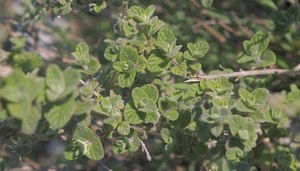
|
Origanum vulgare |
4-10
Full sun, Partial sun/shade
Dry, Moist
Light (sandy), Medium, Heavy (clay)
4.5–8.7
0.6
0.6
Perennial
Herbs
Medium
20cm
true
Flowers, Leaves, Stem
Condiment, Tea
Pot Marjoram
Lamiaceae or Labiatae
Afghanistan, Albania, Algeria, Altay, Austria, Azores, Baleares, Baltic States, Belarus, Belgium, Bulgaria, Buryatiya, Canary Is., Central European Rus, China North-Central, China South-Central, China Southeast, Corse, Cyprus, Czechoslovakia, Denmark, East Aegean Is., East European Russia, East Himalaya, Finland, France, Germany, Great Britain, Greece, Hungary, India, Iran, Iraq, Ireland, Irkutsk, Italy, Kazakhstan, Kirgizstan, Krasnoyarsk, Kriti, Krym, Madeira, Morocco, Nepal, Netherlands, North Caucasus, North European Russi, Northwest European R, Norway, Pakistan, Poland, Portugal, Romania, Sardegna, Sicilia, South European Russi, Spain, Svalbard, Sweden, Switzerland, Tadzhikistan, Taiwan, Tibet, Transcaucasus, Tunisia, Turkey, Turkey-in-Europe, Turkmenistan, Tuva, Ukraine, Uzbekistan, West Himalaya, West Siberia, Xinjiang, Yakutskiya, Yugoslavia
Arkansas, British Columbia, California, Connecticut, Delaware, Illinois, Maryland, Massachusetts, Mexico Southwest, Michigan, New Jersey, New York, New Zealand South, North Carolina, Nova Scotia, Ohio, Ontario, Oregon, Pennsylvania, Primorye, Prince Edward I., Québec, Venezuela, Vermont, Virginia, Washington
https://en.wikipedia.org/wiki/Oregano
https://pfaf.org/User/Plant.aspx?LatinName=Origanum vulgare
https://powo.science.kew.org/taxon/urn:lsid:ipni.org:names:453395-1
best in late Spring; softwood cuttings root fastest
true
Dye, Essential Oil, Pest control, Strewing, Dynamic accumulator, Ground cover, Fragrance
|
Oregano, also known as Origanum vulgare, is a herb that is native to the Mediterranean region. It is a small, bushy plant that grows to a height of about 1 to 2 feet and has a woody stem. The leaves are oval-shaped and are covered in small hairs. The flowers are small and white or purple in color and grow in clusters. Oregano grows best in well-drained, fertile soil in a sunny location. It is winter hardy and can withstand cold temperatures. To cultivate oregano successfully, a grower may need to provide adequate watering and sunlight, and may also need to prune the plant regularly to keep it from becoming leggy. The leaves of the oregano plant are edible and can be used fresh or dried in cooking. They have a strong, pungent flavor and are commonly used in Italian, Greek, and Mexican cuisine. The leaves can be stored after harvest by drying them and storing them in an airtight container. In addition to its use in cooking, oregano has also been used in traditional medicine to treat a variety of conditions, including respiratory problems and digestive issues. It is also known to attract pollinators, making it valuable for wildlife. |
Show
Edit |
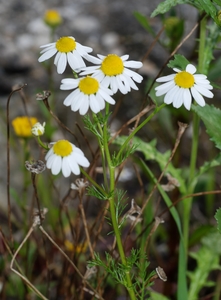
|
Chamomile |
5-9
Full sun
Dry, Moist
Light (sandy), Medium, Heavy (clay)
0.5
0.05
Annual
Herbs
at last frost date
1 week
Matricaria recutita - L., German chamomile, wild chamomile
Kamille
Asteraceae or Compositae
Afghanistan, Albania, Algeria, Altay, Austria, Azores, Belarus, Belgium, Bulgaria, Buryatiya, Canary Is., Central European Rus, China North-Central, China South-Central, China Southeast, Cyprus, Czechoslovakia, Denmark, East Aegean Is., East European Russia, Egypt, Finland, France, Germany, Greece, Hungary, India, Iran, Iraq, Irkutsk, Italy, Kazakhstan, Kirgizstan, Korea, Krasnoyarsk, Kriti, Krym, Lebanon-Syria, Manchuria, Mongolia, Morocco, Myanmar, Netherlands, North Caucasus, Northwest European R, Norway, Pakistan, Palestine, Portugal, Romania, Sardegna, Sicilia, Sinai, South European Russi, Spain, Sweden, Switzerland, Tadzhikistan, Transcaucasus, Turkey, Turkey-in-Europe, Tuva, Ukraine, Uzbekistan, Vietnam, West Himalaya, West Siberia, Xinjiang, Yakutskiya, Yugoslavia
Alabama, Alberta, Arizona, Arkansas, Baleares, Baltic States, Bolivia, British Columbia, California, Colombia, Connecticut, Corse, Costa Rica, Cuba, District of Columbia, Dominican Republic, Ecuador, El Salvador, Ethiopia, Great Britain, Greenland, Guatemala, Gulf States, Honduras, Illinois, Indiana, Iowa, Ireland, Jawa, Juan Fernández Is., Kansas, Kentucky, Magadan, Maine, Mali, Manitoba, Maryland, Massachusetts, Mexico Southeast, Michigan, Minnesota, Mississippi, Missouri, New Jersey, New South Wales, New York, Newfoundland, Nicaragua, North Dakota, North European Russi, Nova Scotia, Ohio, Ontario, Oregon, Paraguay, Pennsylvania, Peru, Poland, Primorye, Québec, Rhode I., Saskatchewan, South Australia, Tennessee, Texas, Tunisia, Uruguay, Utah, Vermont, Virginia, Washington, Wisconsin
https://en.wikipedia.org/wiki/Matricaria_chamomilla
https://powo.science.kew.org/taxon/urn:lsid:ipni.org:names:154715-2
Direct sow in autumn or shortly before latest date of frost
Start seeds indoors 6-8 weeks before last frost date
|
Chamomile is a plant native to Europe, North Africa, and Western Asia. It has a small, daisy-like flower with white petals and a yellow center. The leaves are thin and feathery, and the stem is thin and wiry. Chamomile grows to be about 12-24 inches tall and spreads to about 16-20 inches wide. It grows quickly, producing flowers within a few weeks of germination. Chamomile prefers well-drained soil and full sun to partial shade. It is a hardy plant and can tolerate drought and frost. To cultivate chamomile successfully, it is important to keep the soil moist and well-watered, especially during hot weather. Needs light to germinate. The flowers and leaves of chamomile are edible and can be used in a variety of dishes, including teas and salads. The flowers can also be dried and stored for later use. Chamomile has a number of medicinal properties and has been used to treat a variety of conditions, including anxiety, insomnia, and digestive issues. It is also believed to have anti-inflammatory and antimicrobial properties. In addition to its medicinal uses, chamomile can also be used as a ground cover or as a companion plant in gardens. It can help to repel pests and improve the health of nearby plants. Chamomile is also valued by bees and other pollinators, making it an important plant for maintaining biodiversity in gardens and agricultural areas. #### Links [Chamomile @ Plants For A Future](https://pfaf.org/user/Plant.aspx?LatinName=Matricaria recutita) |
Show
Edit |
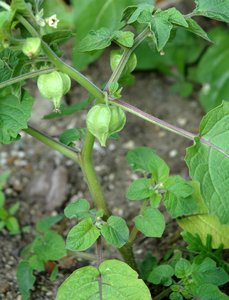
|
Strawberry Tomato |
4-8
Full sun, Partial sun/shade
Dry, Moist
Light (sandy), Medium, Heavy (clay)
6-6.8
0.6
Annual, Perennial
Herbs
60cm
6-8 weeks before last frost
Attracts pollinators
true
Fruit
Ground cherry, Caped gooseberry
Solanaceae
Central America, Argentina Northeast, Argentina Northwest, Costa Rica, El Salvador, Guatemala, Honduras, Mexico Central, Mexico Gulf, Mexico Northeast, Mexico Northwest, Mexico Southeast, Mexico Southwest, Nicaragua, Paraguay, Venezuela
Bolivia, Brazil Northeast, India, Ogasawara-shoto
https://en.wikipedia.org/wiki/Physalis_pruinosa
https://pfaf.org/User/Plant.aspx?LatinName=Physalis pruinosa
https://powo.science.kew.org/taxon/urn:lsid:ipni.org:names:317701-2
0.6
65-75
|
Physalis pruinosa, also known as the ground cherry, is a plant native to North America. It is a small, herbaceous plant that typically grows to be about 1-2 feet tall. The leaves are oval-shaped and about 2-4 inches long. The plant produces small, yellow flowers, followed by a fruit encased in a papery husk. The fruit is about the size of a cherry tomato and is edible. In terms of growing conditions, Physalis pruinosa prefers well-drained, sandy soil and full sun to partial shade. It is not winter hardy and will die back in cold weather, but will regrow from the roots in the spring. To cultivate the plant successfully, a grower will need to provide these ideal growing conditions and may need to protect the plant from frost in colder climates. The fruit of Physalis pruinosa is edible and can be eaten fresh or cooked. It has a sweet and tangy flavor. The fruit can be stored by removing it from the husk and keeping it in a cool, dry place. In addition to being eaten, the fruit of Physalis pruinosa can also be used in jams and jellies. The plant has some medicinal uses as well, including treating stomach ailments and respiratory issues. It is also valued by wildlife, providing food for birds and small mammals. ### Links [Ground cherry @ Gardener's Path](https://gardenerspath.com/plants/fruit/grow-ground-cherries/) [How to grow ground cherries @ Growing in the Garden](https://growinginthegarden.com/how-to-grow-ground-cherries-10-tips-for-growing-ground-cherries/) |
Show
Edit |